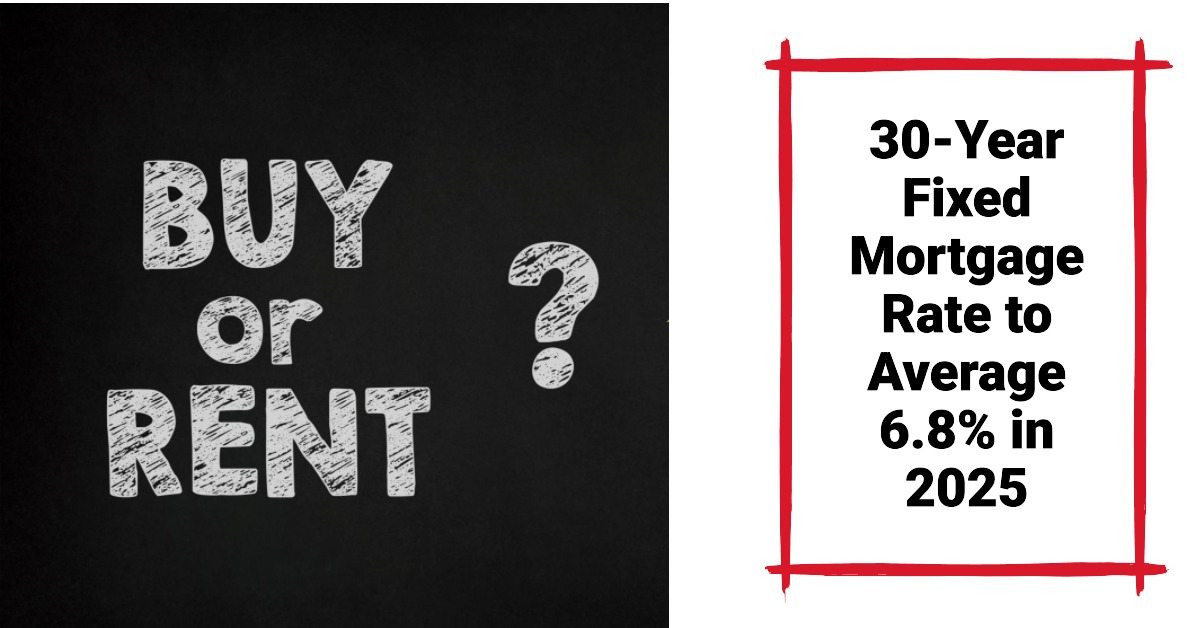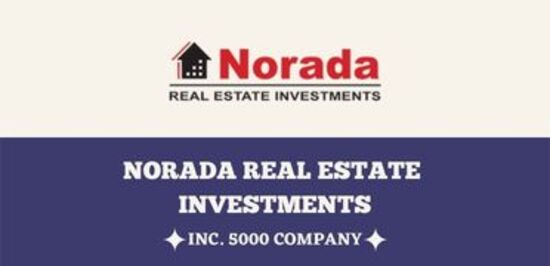If you're like me, you're probably glued to housing market news, especially if you're dreaming of buying a home. And lately, the big question on everyone's mind is: where are mortgage rates headed? Well, buckle up, because the latest forecast isn't exactly a smooth ride. Experts at Fannie Mae are predicting that the 30-year fixed-rate mortgage will likely average 6.8% throughout 2025, and settle around 6.6% by the end of the year. Yes, you read that right. It seems those hopes for a significant drop in rates might have to wait a bit longer.
Now, I know what you might be thinking – 6.8%? That's still pretty high! And you're not wrong. We've been hovering around the 7% mark recently, according to Freddie Mac, and anything above 6% feels like a lot compared to the super-low rates we saw just a couple of years ago. But before you let out a frustrated sigh, let's dig into what's driving these predictions and what it really means for you and the housing market.
Mortgage Rate Prediction 2025: Will the 30-Year Fixed Average 6.8%?
Why Higher Rates Are Sticking Around Longer
Honestly, I was hoping to see rates come down more quickly this year. Like many folks, I was listening to whispers in late 2024 about potential rate cuts from the Federal Reserve. But, as Fannie Mae points out, things haven't played out that way. We're facing a cocktail of economic factors that are keeping mortgage rates higher for longer than many of us anticipated.
- Persistent Inflation: Remember when we thought inflation was finally cooling down? Well, it's proving to be a bit more stubborn than expected. Recent inflation data has been hotter than economists predicted. This is important because inflation directly impacts interest rates. When prices are rising faster, the Federal Reserve tends to keep interest rates higher to try and cool things down.
- Stronger Economic Growth: On one hand, strong economic growth sounds like good news. And in many ways, it is! But, surprisingly, it can also contribute to higher mortgage rates. A robust economy can fuel inflation, as people are spending more and businesses are more active. This, again, gives the Fed reason to maintain higher interest rates.
- Trade Policy Uncertainty: This is a wildcard factor that's a bit harder to pin down, but Fannie Mae specifically mentions it: uncertainty around trade policy, particularly concerning tariffs. Remember talk of tariffs and trade wars? Well, these policies can impact the cost of goods, potentially leading to more inflation and influencing long-term interest rates. Even the threat of tariffs can create economic uncertainty, which can ripple through financial markets and affect mortgage rates.
- The Fed's Pause: The Federal Reserve has indeed paused its rate cuts. The initial expectation was that we'd see several cuts throughout 2024 and into 2025. However, with inflation not cooperating as much as hoped, those cuts have been put on hold, and the timeline for future cuts is very unclear. This pause directly impacts mortgage rates because they tend to track the general direction of the Fed's policy rate.
Basically, the economic picture is a bit murkier than we thought a few months ago. And this murkiness translates to higher projected mortgage rates. Fannie Mae themselves have revised their predictions upwards twice already – first from a 6.2% average to 6.5%, and now to 6.8%. That tells me even the experts are adjusting their forecasts as the economic situation evolves.
Owning vs. Renting in 2025: A Surprising Twist?
Now, with mortgage rates expected to stay elevated, you might think renting is the obvious choice, right? Well, hold on a second. Data from ATTOM, a real estate data company, throws a bit of a curveball into this equation. Their 2025 Rental Affordability Report reveals something quite interesting: owning a home might actually be more affordable than renting in more than half of the county-level markets across the US!
I know, it sounds almost counterintuitive, especially when we keep hearing about sky-high home prices. But let's unpack this. ATTOM analyzed data on average rents, median home prices, and average wages to reach this conclusion. Here’s what I gathered from their report:
- Affordability is Still a Struggle: Let's be clear, both owning and renting are a financial strain for many people. ATTOM's report shows that housing costs, whether rent or mortgage, are consuming a significant chunk – 25% to 60% – of average wages in many areas. This is a tough reality for a lot of households.
- Homeownership Can Be More Affordable Than Renting (in Many Places): Despite rising home prices, in nearly 60% of the 341 counties ATTOM analyzed, the major costs of owning a typical single-family home (think mortgage payments, property taxes, insurance) are less than the average rent for a three-bedroom property. That's a pretty significant finding!
- The Down Payment Hurdle: There's a catch, of course. To take advantage of potentially more affordable homeownership, you need to clear the down payment hurdle. And as ATTOM CEO Rob Barber points out, down payments can often exceed $200,000 in some markets. This is a massive barrier for many first-time buyers. However, for those who can manage the down payment, owning could be the more financially sensible path in many areas.
- Regional Differences are Huge: Affordability isn't uniform across the country. ATTOM highlights major regional disparities.
- Midwest and South: These regions are generally more favorable for homeownership. In roughly 80% of Midwestern counties and 60% of Southern counties analyzed, owning is the more affordable option. This is likely due to a combination of lower home prices and potentially more reasonable property taxes in some of these areas.
- Northeast: The Northeast is more mixed, with homeownership being more affordable in about half of the counties.
- West: The West bucks the trend. Renting is generally the more affordable choice in about 80% of western markets. Think about places like California and Hawaii, where both home prices and rents are notoriously high.
Here's a quick table summarizing the regional trends:
| Region | Homeownership More Affordable (Approx. % of Counties) | Renting More Affordable (Approx. % of Counties) |
|---|---|---|
| Midwest | 80% | 20% |
| South | 60% | 40% |
| Northeast | 50% | 50% |
| West | 20% | 80% |
- Wage Growth vs. Rent and Home Prices: ATTOM also looked at how wages are keeping up with housing costs. The good news is that in nearly three-quarters of local markets, wages are growing faster than rents. This is a positive sign for renters, meaning rent affordability might be improving slightly in some areas. However, the picture is less rosy for homebuyers. In over half of the counties, home prices are increasing faster than wages. This continues to squeeze affordability for potential buyers.
Recommended Read:
Mortgage Rates Forecast March 2025: Will Rates Finally Drop?
Expect High Mortgage Rates Until 2026: Fannie Mae's 2-Year Forecast
Will Mortgage Rates Go Up as Inflation Surges Back Up to 3%
Navigating the Housing Market in 2025
So, what does all this mean if you're thinking about buying or renting in 2025? Here are my thoughts, based on the data and my own take on the market:
- Don't Panic, but Be Realistic: Mortgage rates at 6.8% are not the end of the world. While they are higher than recent years, they are still within historical averages. My advice? Don't let the headlines scare you out of your homeownership dreams, but do be realistic about affordability.
- Shop Around for Rates: Even in a higher rate environment, it pays to shop around and compare mortgage offers from different lenders. Small differences in rates can add up to significant savings over the life of a loan.
- Consider Your Local Market: As ATTOM's data shows, housing affordability is very local. The rent vs. buy equation can be drastically different depending on where you live. Do your research on your specific area. Is owning truly more affordable than renting in your county? Factor in all costs, including down payment, property taxes, and insurance.
- Factor in Long-Term Goals: Think about your long-term financial goals. Is homeownership a priority for you, even with higher rates? Consider the potential for building equity over time, and the stability of owning your own home. Renting might offer more flexibility in the short term, but owning can be a powerful wealth-building tool in the long run.
- Don't Wait for the “Perfect” Rate: Trying to time the market and wait for the absolute lowest mortgage rate is often a losing game. No one has a crystal ball. If you find a home you love and can comfortably afford the monthly payments at current rates, it might be better to move forward than to wait indefinitely for rates to potentially drop. Rates could even go higher!
- Be Prepared for Competition (Potentially): Fannie Mae also revised their existing-home sales projections slightly upwards for 2025. This could mean that if rates do stabilize or even dip slightly, we might see more buyers enter the market, potentially leading to increased competition and maybe even upward pressure on home prices in some areas.
Looking Ahead
Predicting the future of mortgage rates is always a bit like reading tea leaves. Economic conditions can change rapidly, and unexpected events can throw forecasts off course. However, based on the latest data from Fannie Mae and ATTOM, it seems like we should prepare for mortgage rates to remain elevated throughout 2025.
While this might be disappointing news for some, it's important to remember that the housing market is still functioning, and homeownership remains attainable for many. The key is to be informed, realistic about affordability, and to make smart financial decisions based on your individual circumstances and local market conditions. And who knows, maybe the economic winds will shift again, and we'll see rates surprise us on the downside. Until then, stay informed, stay savvy, and good luck with your housing journey!
Work with Norada in 2025, Your Trusted Source for
Real Estate Investing
With mortgage rates fluctuating, investing in turnkey real estate
can help you secure consistent returns.
Expand your portfolio confidently, even in a shifting interest rate environment.
Speak with our expert investment counselors (No Obligation):
(800) 611-3060
Recommended Read:
- Mortgage Rates Forecast for the Next 3 Years: 2025 to 2027
- 30-Year Mortgage Rate Forecast for the Next 5 Years
- 15-Year Mortgage Rate Forecast for the Next 5 Years
- Why Are Mortgage Rates Going Up in 2025: Will Rates Drop?
- Why Are Mortgage Rates So High and Predictions for 2025
- Will Mortgage Rates Ever Be 3% Again in the Future?
- Mortgage Rates Predictions for Next 2 Years
- Mortgage Rate Predictions for Next 5 Years
- Mortgage Rate Predictions: Why 2% and 3% Rates are Out of Reach
- How Lower Mortgage Rates Can Save You Thousands?
- How to Get a Low Mortgage Interest Rate?
- Will Mortgage Rates Ever Be 4% Again?



